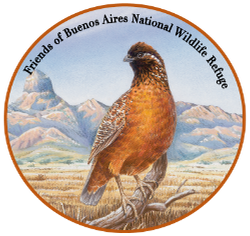Among Friends 5 May 2021. Spring is Galloping toward Summer
by Walt Anderson
To truly develop a sense of place, you need to listen to the conversations going on out there. You can learn to read between the lines, to marvel at the very existence of these ancient rocks that formed deep beneath the ground and now stand revealed to experience the seasons of wind, sun, frost, raven claw, and hiking boot. There is also recent history, more comprehensible to us short-lived creatures: the long tenancy of Native Americans, the arrival of settlers that changed everything, the decades of cattle grazing, the establishment of the refuge to protect the endangered Masked Bobwhite Quail and general biodiversity, and the impacts of a border wall and political divisions.
I hope that we can learn to love our homeland for what it is and for what it could be. I want to celebrate here some of the life of this very special state and also to urge us to be wise in how we manage our incredible landscapes. We need to protect what we love. There are things whose values transcend commodity, whose worth is not measured in economic terms. Ironically, protecting those intrinsic values can incidentally offer financial benefits to a community in addition to the esthetic ones. Buenos Aires National Wildlife Refuge is a treasure for all people, and it pays to have Friends!
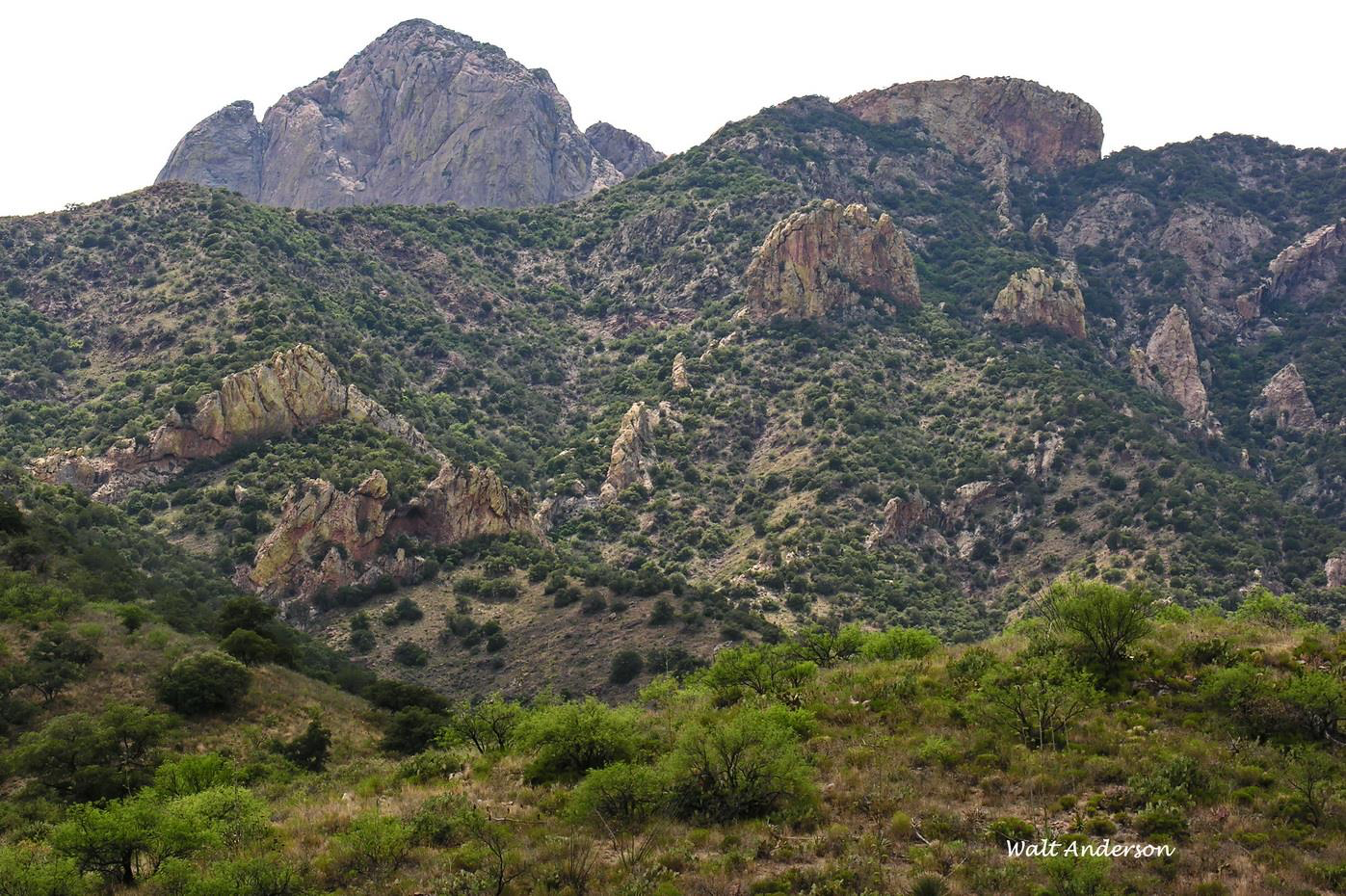
Brown Canyon and Baboquivari Peak in May, a special time in which Spring seems to be galloping toward Summer. Winter dormancy is over, and the photosynthetic machinery of plants has cranked up to a fever pitch. Green begins to dominate over the duller colors of winter. May, however, is the start of the arid foresummer in Arizona, and there is typically another burst of greenery after the monsoon rains begin in July.

Cottonwoods along the creeks and in the cienega have regrown their foliage and have begun producing the seeds that they will disperse by the millions in their “shotgun” approach to reproduction.

Spring in Arizona is typically windy, which suits the reproductive strategy of the Fremont Cottonwoods just fine. An explosion of cotton “snow” fills the air on those breezy days, sending millions of fluffy parachutes over the landscape where some might find the right conditions of soil and moisture to germinate. The promise of new life, however, is often denied, especially in these drought years. Surface moisture is rare, and cottonwoods themselves are dying from drought stresses. Human demands for more and more water drop water tables and deprive our rare creeks of flow. Hydrologists warn us of overdraft, yet some of our elected officials rush to give away “water rights” based on fanciful projections that defy eco-logic.

The high, sweet whistles of Yellow Warblers grace the riparian areas in which the Sonoran subspecies nest. Other migrants heading north move through the refuge in waves, even in the uplands to feed on the tiny insects that thrive among the flowers of oaks, mesquites, and other plants.
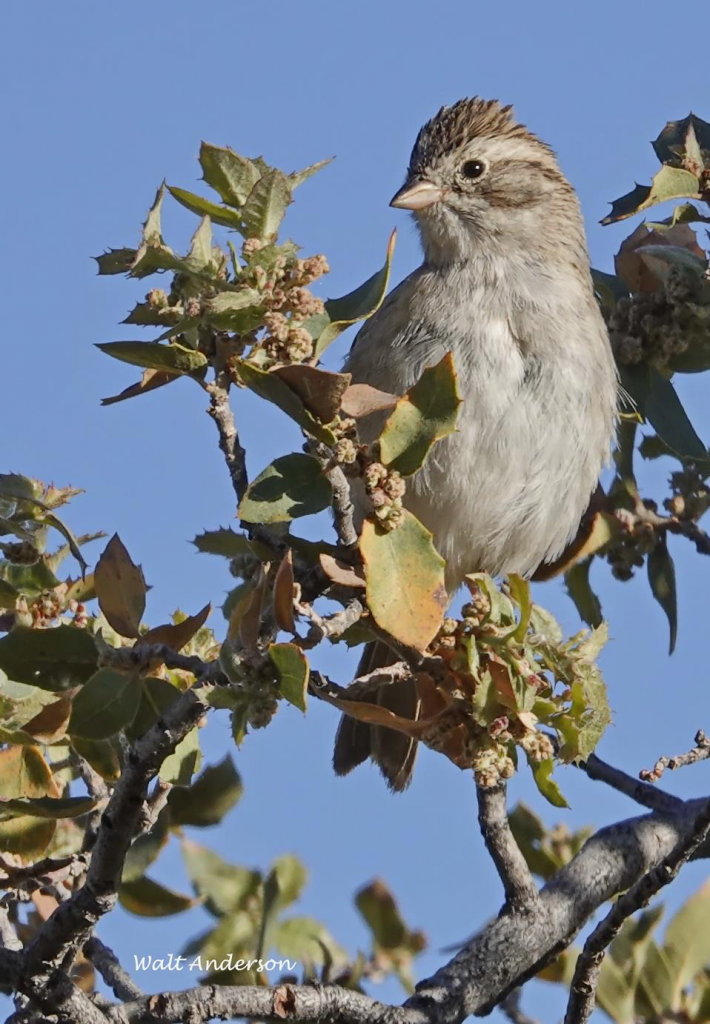
Though lacking the brilliant colors of the warblers, Brewer’s Sparrows that wintered on the refuge and others that “vacationed” in Mexico move through en route to breeding grounds in the interior West.
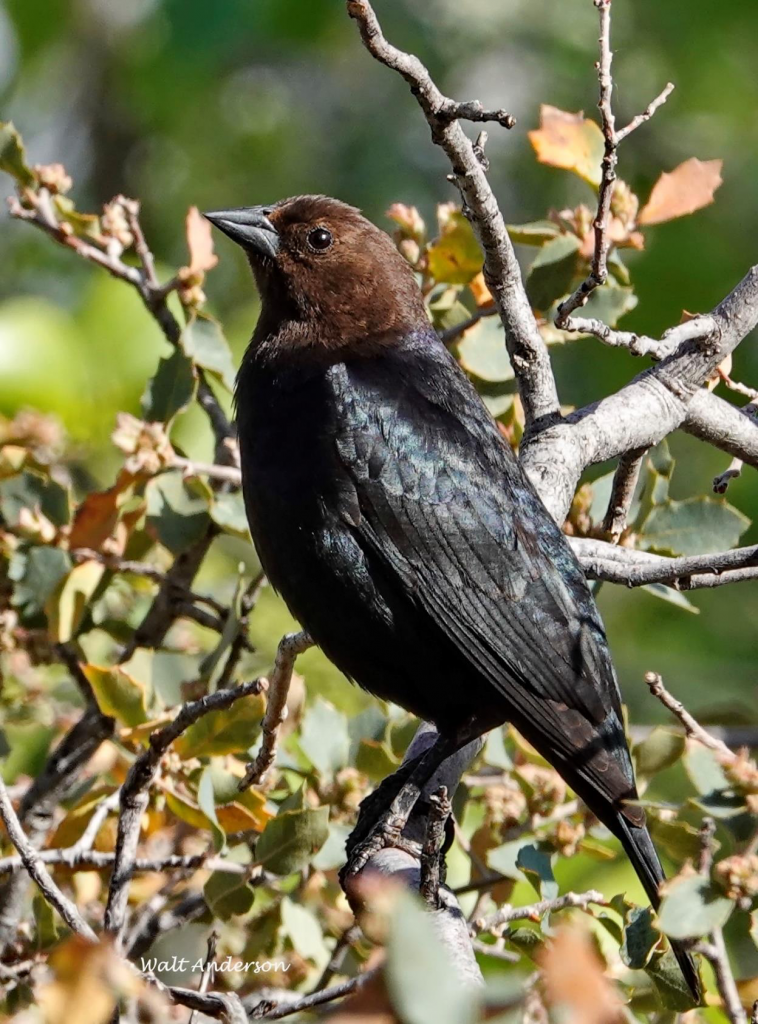
Brown-headed Cowbirds are now back for the warmer months, and their gurgling and squeaky displays can be entertaining to tune into. These are nest parasites, however, with the females sneaking their eggs into the nests of unsuspecting hosts, which then may end up feeding imposter chicks that outgrow their own. We may recoil at the thought of parasitism, but it is a common and successful life history strategy for thousands of organisms. If parasitism is reducing the fitness of others without actually killing them, then we humans should cast no stones. On a planetary scale, there is no bigger parasite than us.
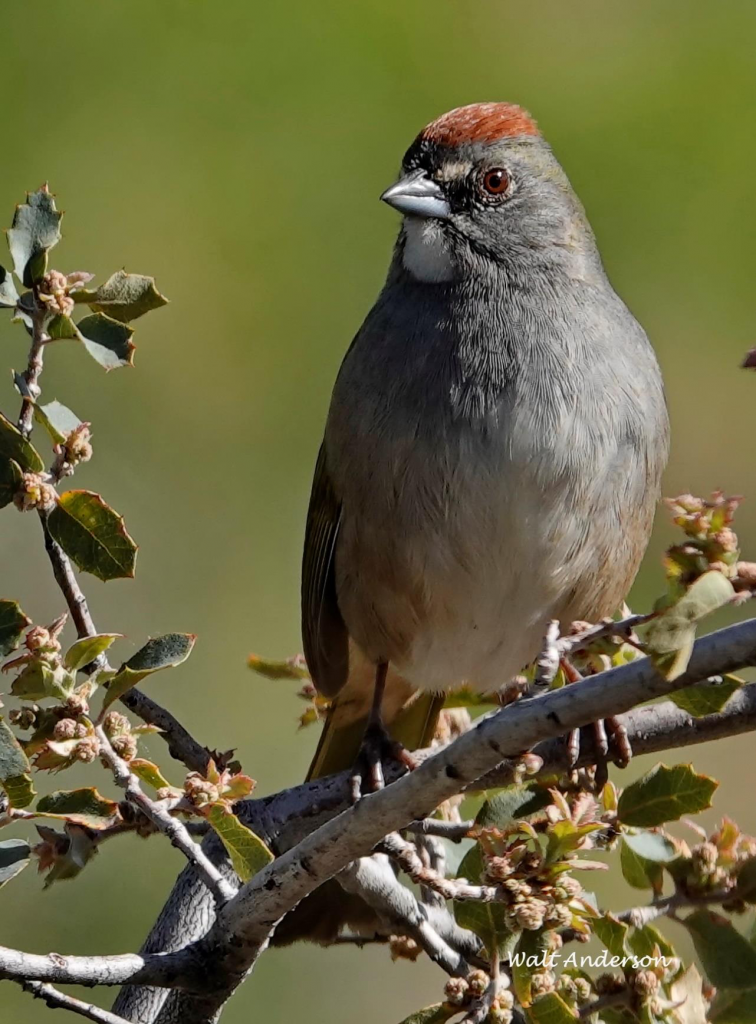
The Green-tailed Towhee is an “overgrown sparrow” that winters in small numbers on Buenos Aires refuge (with many more in Mexico) and then moves north to breed in the intermountain West. Migrant birds must find suitable habitat everywhere they go. One benefit of a large refuge is to help support sustainable populations of birds, whether residents or visitors. This will be even more important as ecosystems are altered by changing climate patterns.
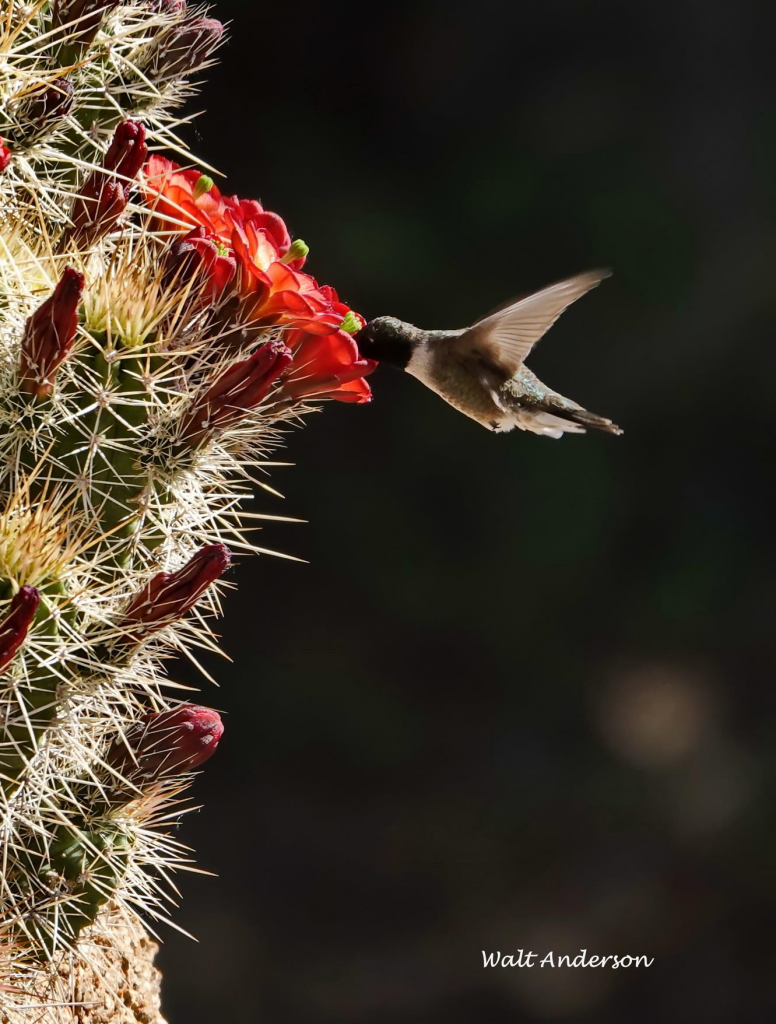
Black-chinned Hummingbirds leave Arizona during the winter but return to breed widely across the state, where they compete to some extent with the larger and more aggressive Anna’s and other species that may co-occur with them. This one is nectaring on a Claret Cup Cactus.
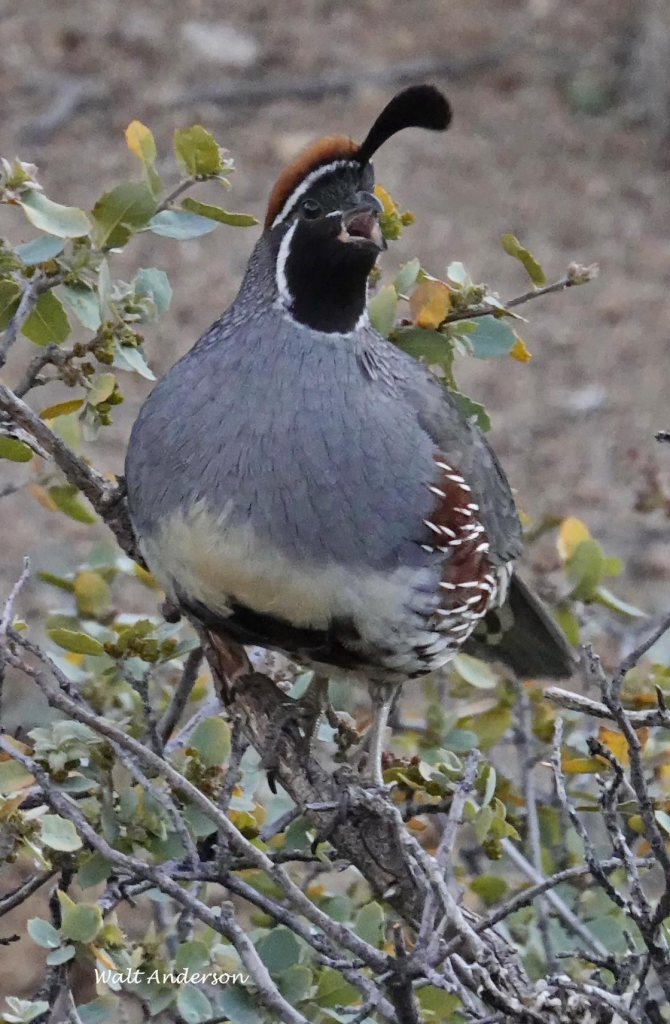
The plaintive “Waa-aa” call of this male Gambel’s Quail shows him to be a bachelor crying for a mate. The sex ratio of adult quails is biased toward males, so every year, some fellas get left out and have to perform their lonely displays in case a female should lose her chosen mate.
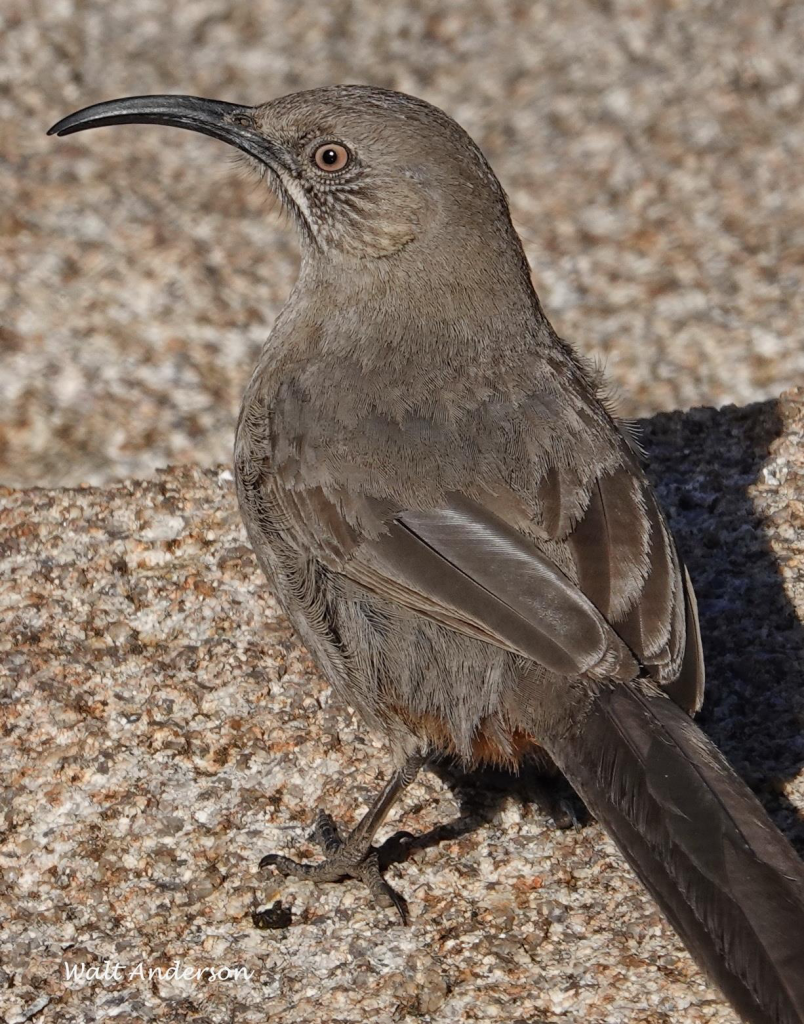
The Crissal Thrasher, featured in an earlier essay on “mimids,” is relatively shy compared to its desert cousin, the Curve-billed.
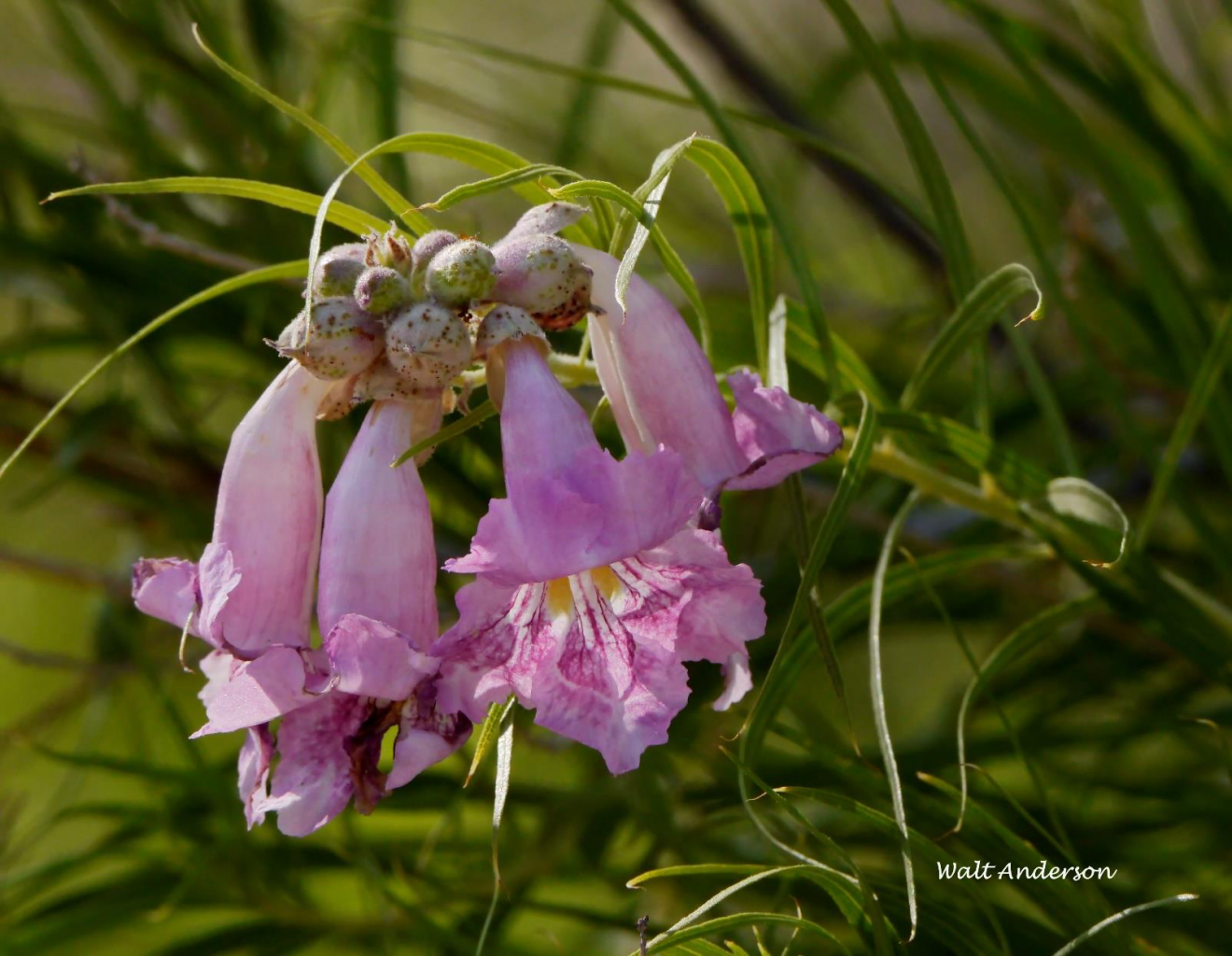
In contrast to the subtle wind-pollinated flowers of the cottonwoods and willows, some plants really put on a show. One of the showiest is the Desert Willow, not a true willow at all but called one because of the similarity of its linear leaves. It’s in the Bignoniaceae, mostly a tropical family.

Western Blue Flax is blooming now too, and this one has attracted a gorgeous metallic-green sweat bee of the family Halictidae. No sweat, no pollination.
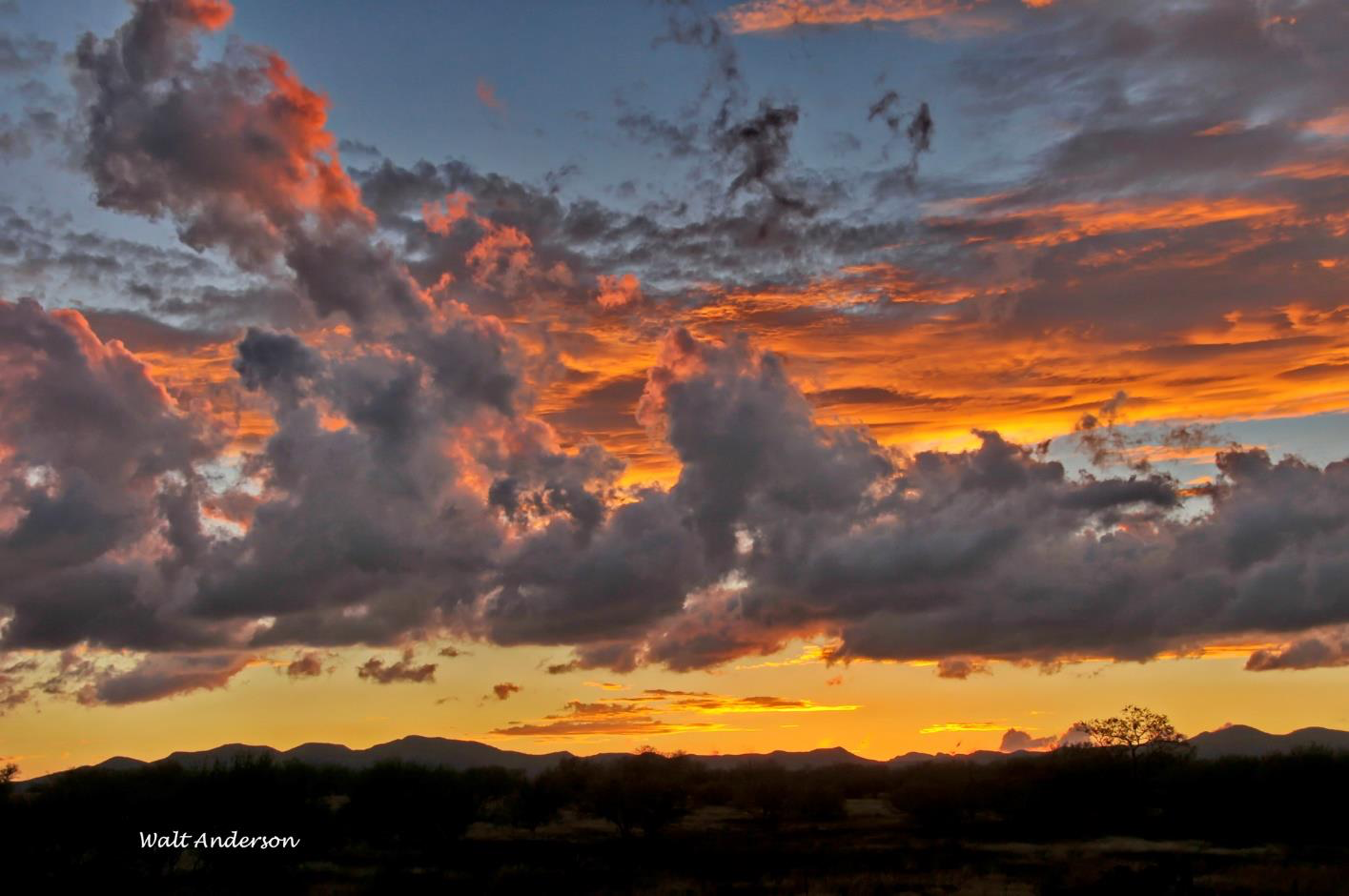
All of this lovely life occurs at Buenos Aires NWR, a refuge in every sense of the word. We are indeed very lucky that people had the foresight to protect and manage this land. Please spread the word and help build an even bigger community of Friends for this special place.
